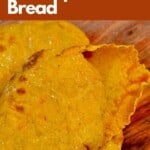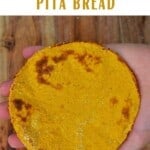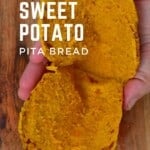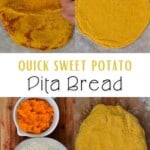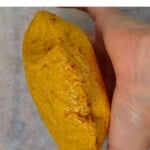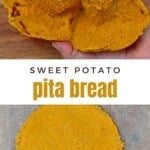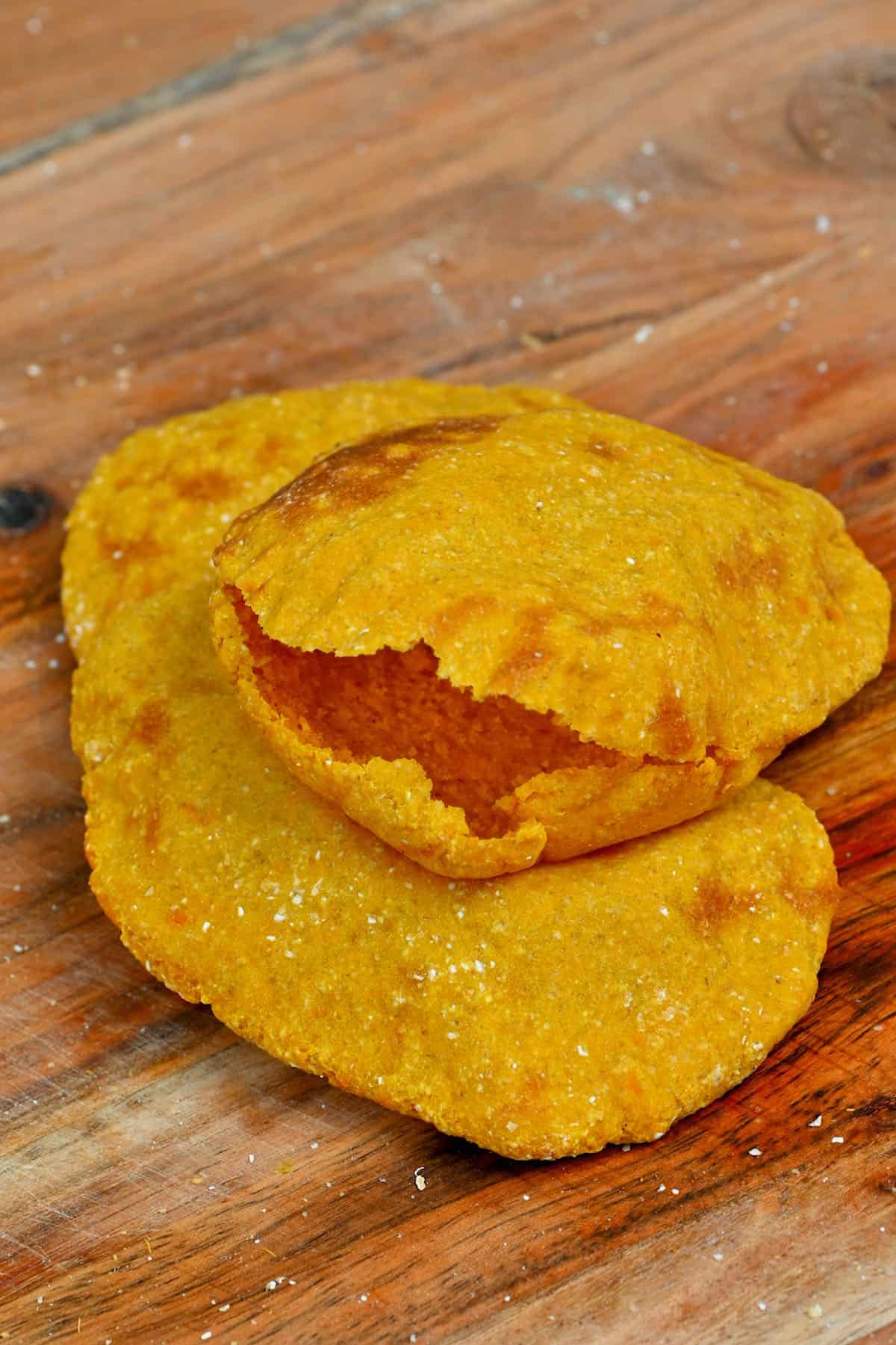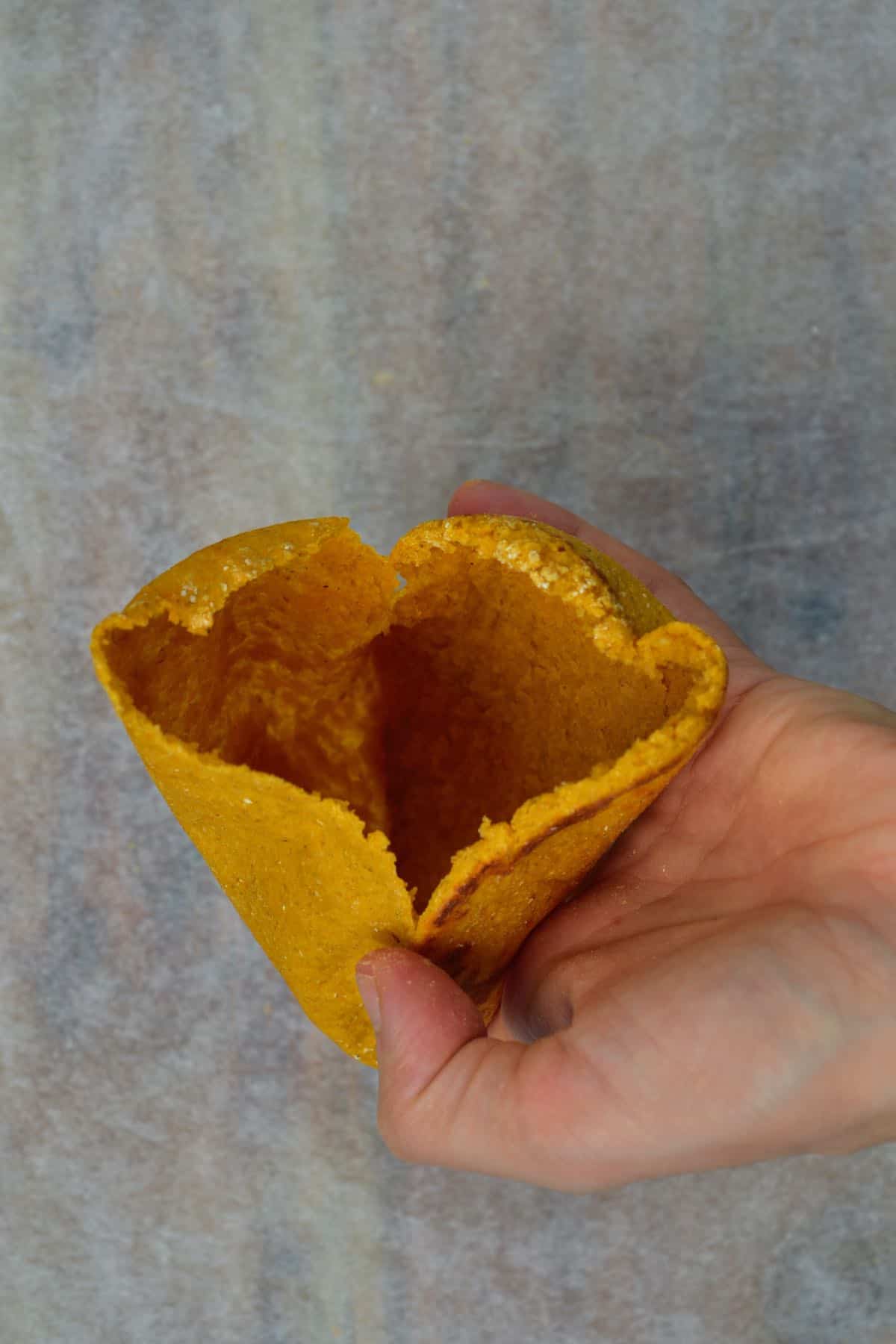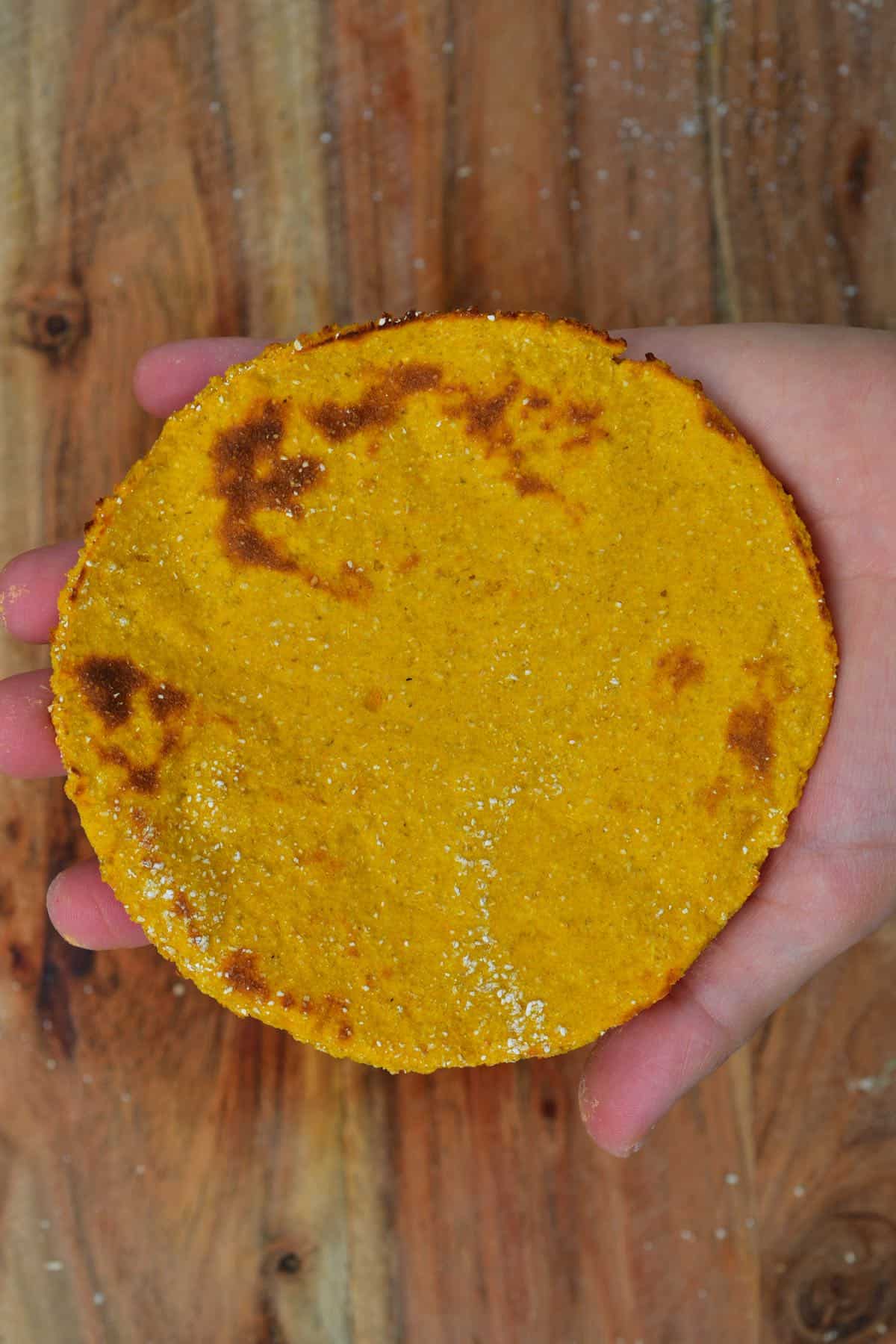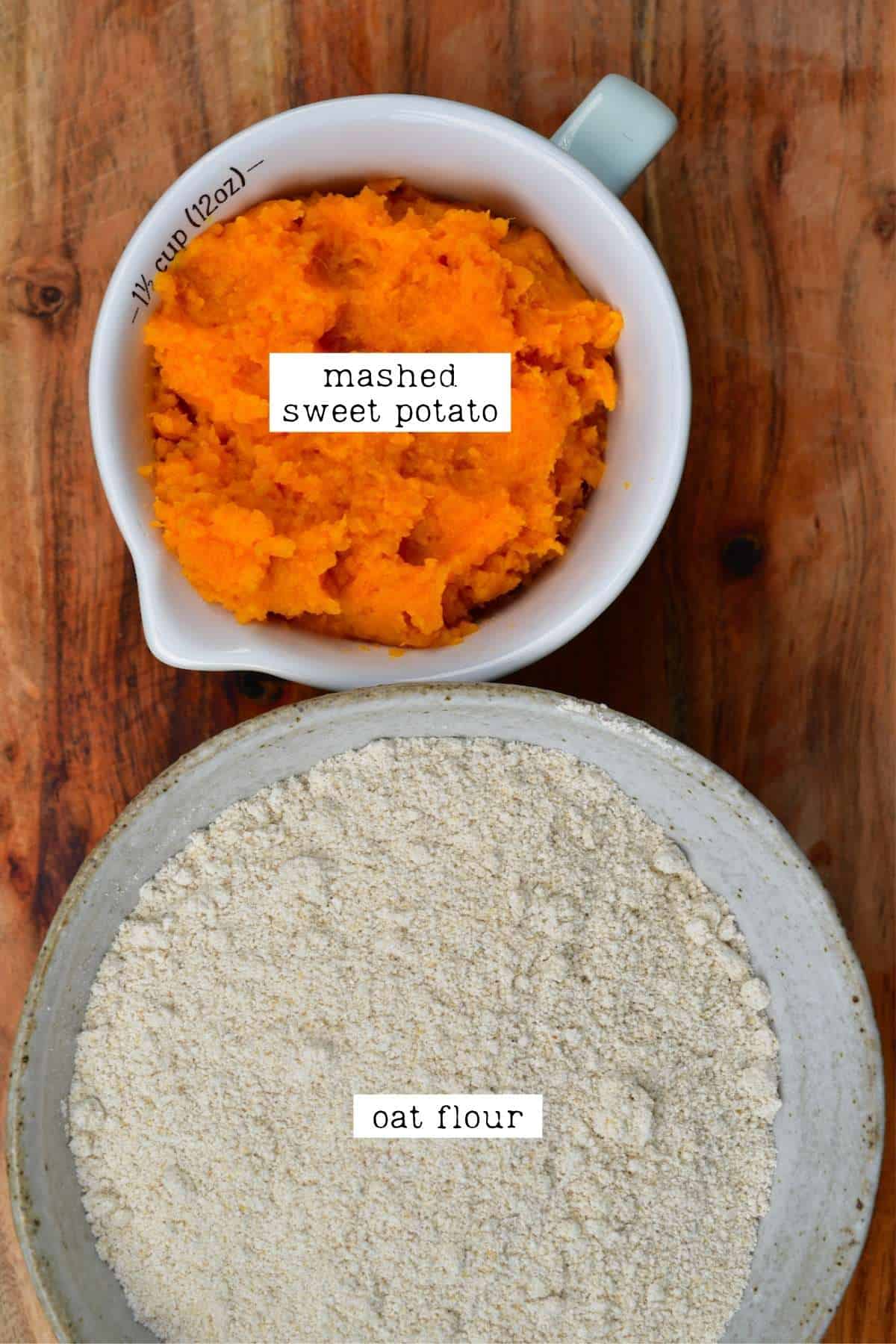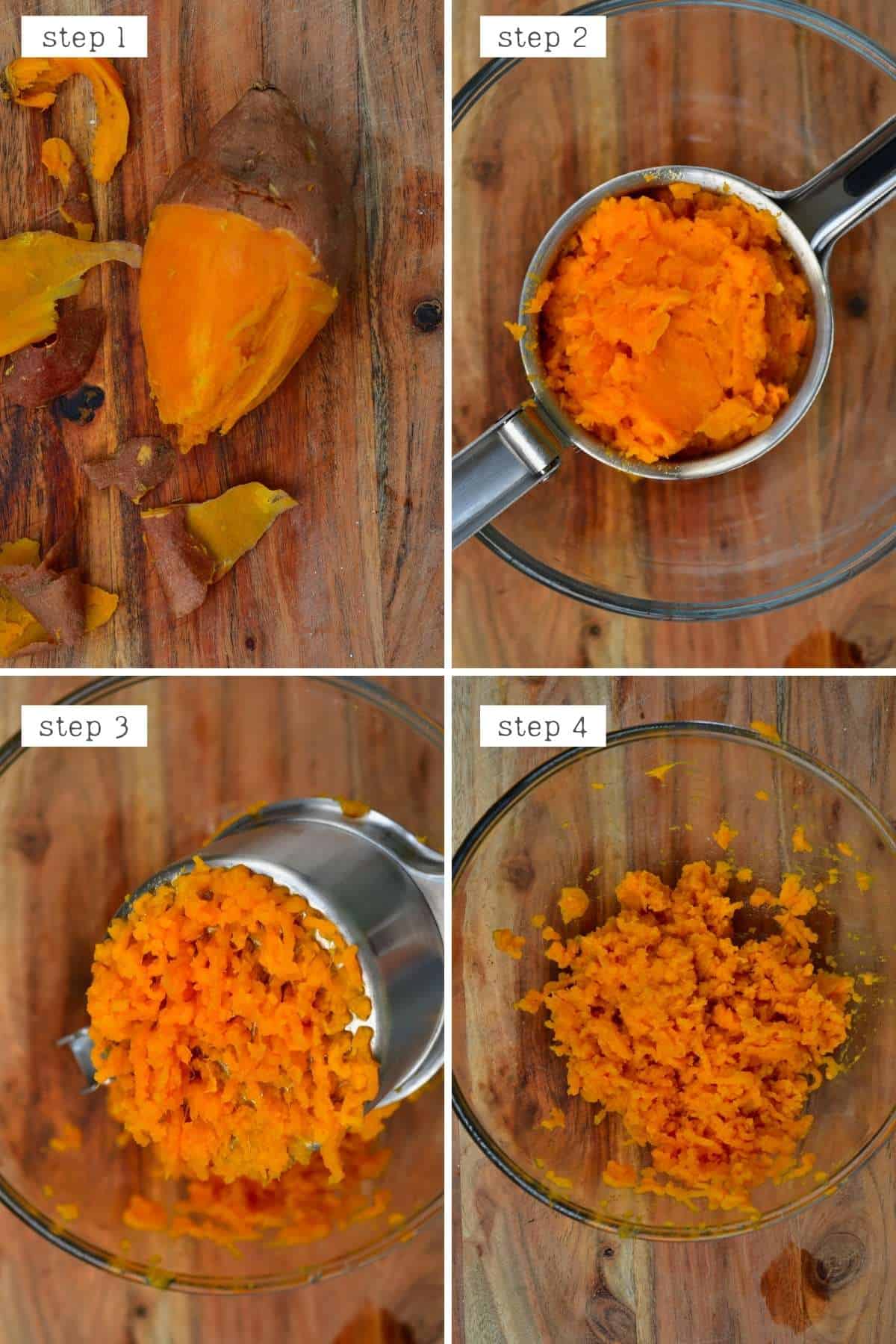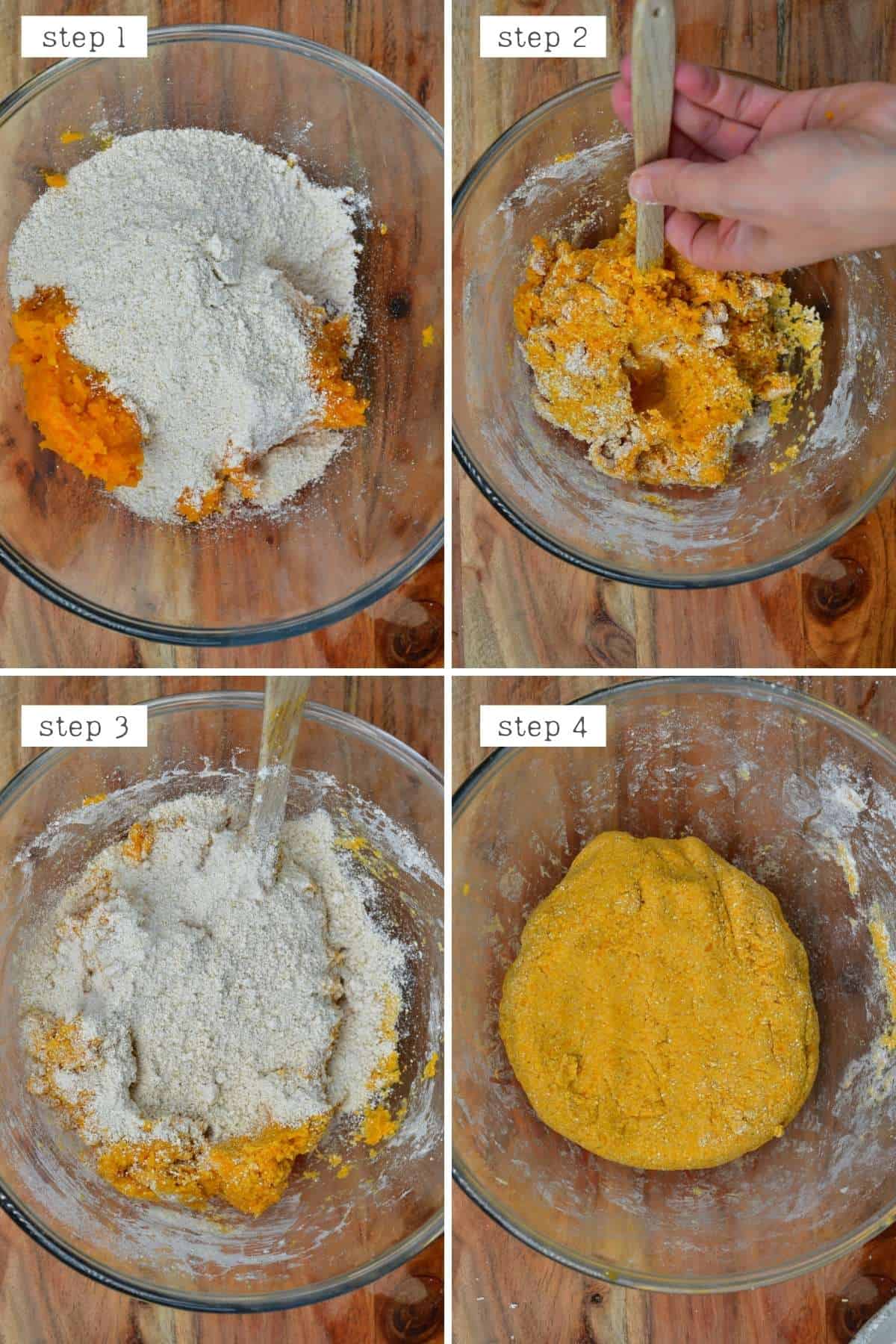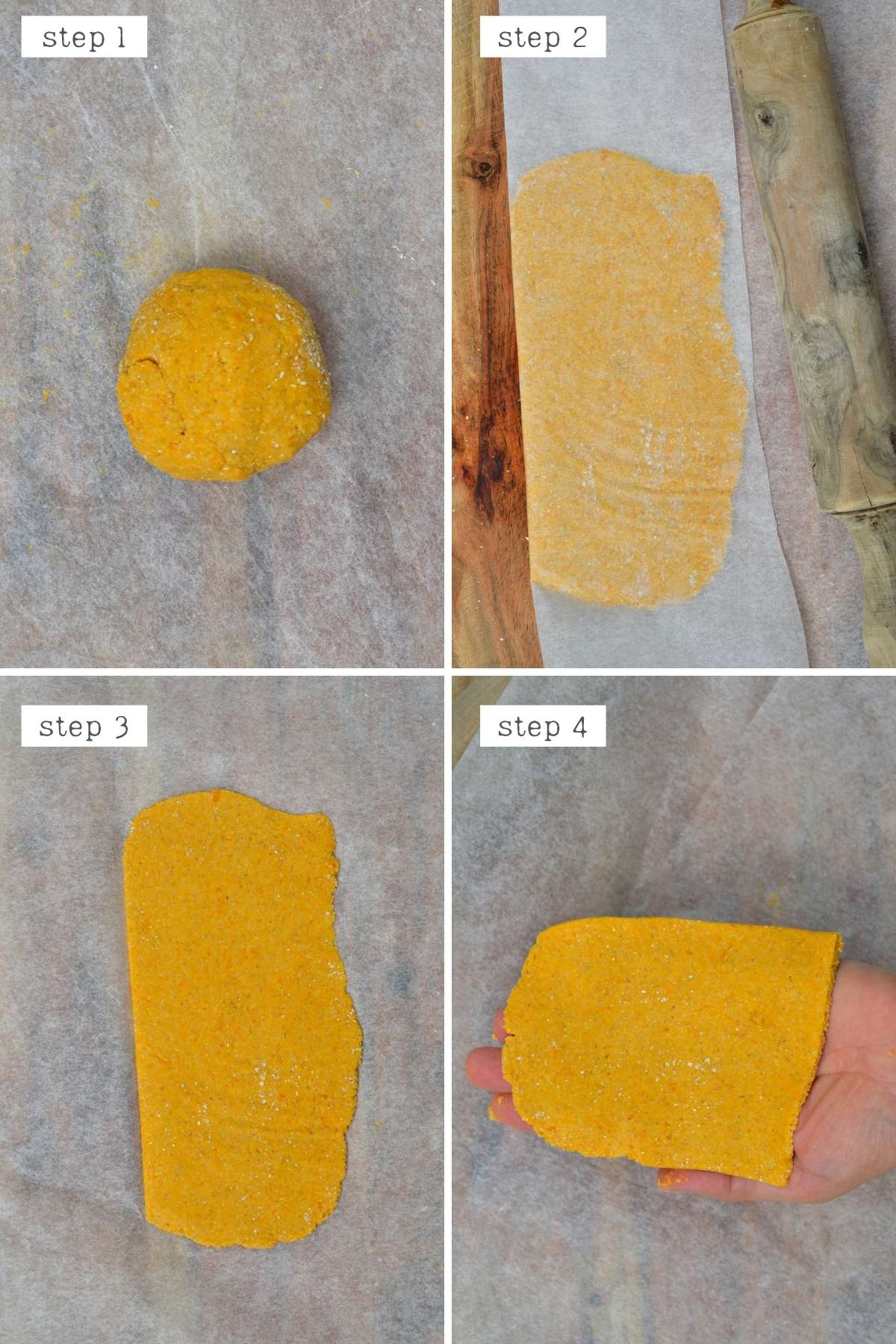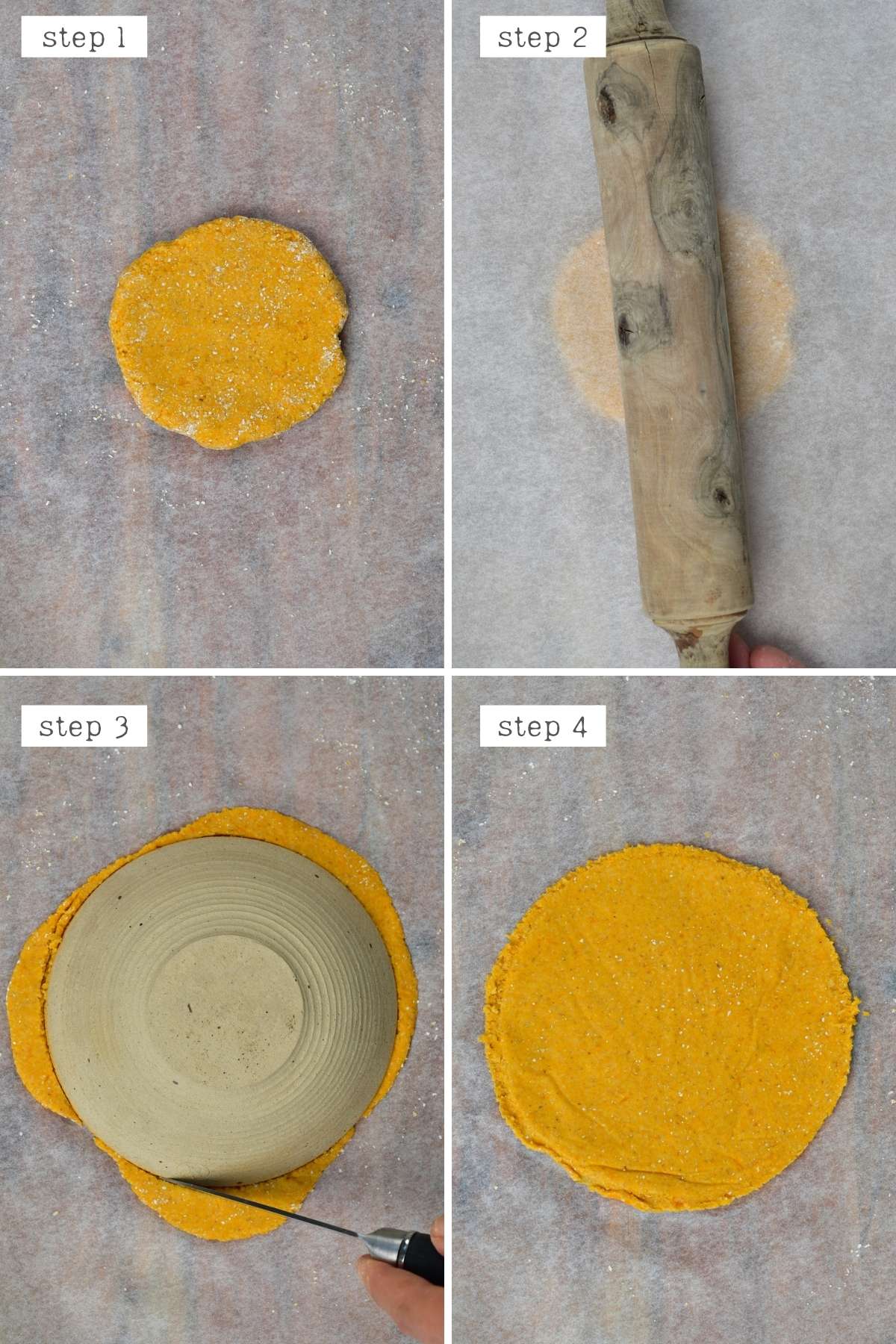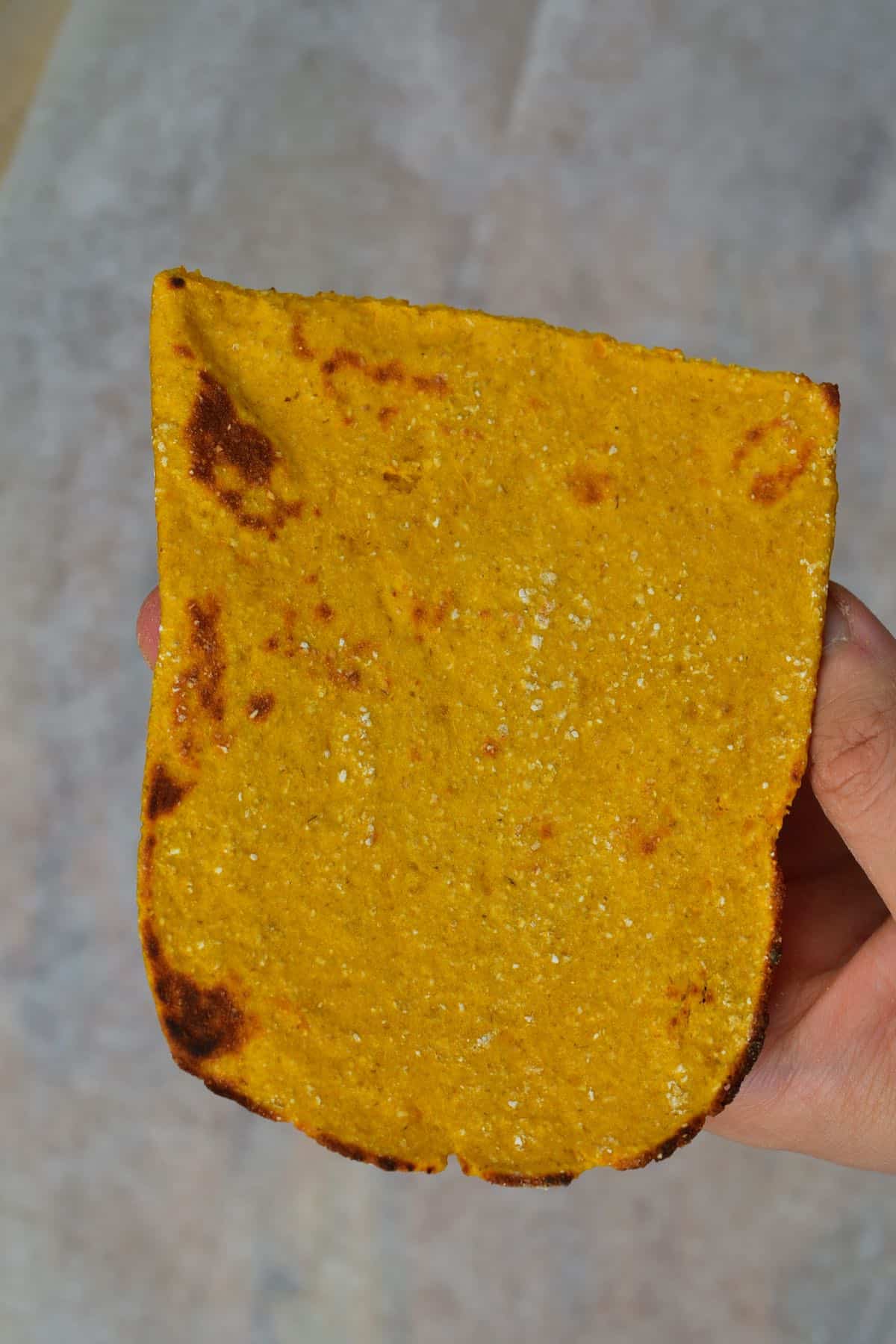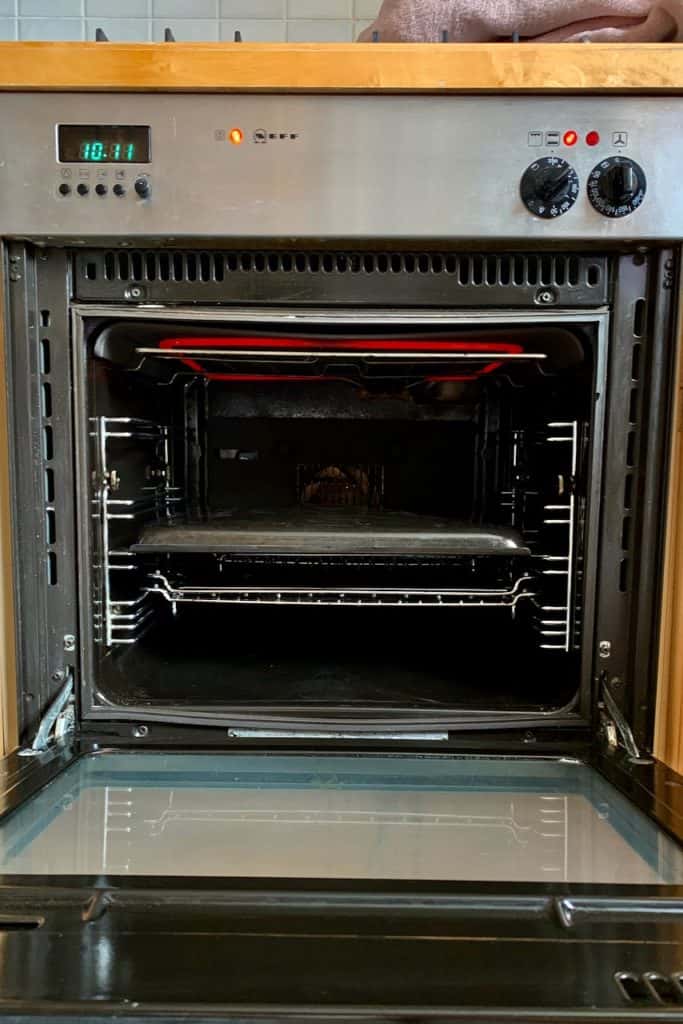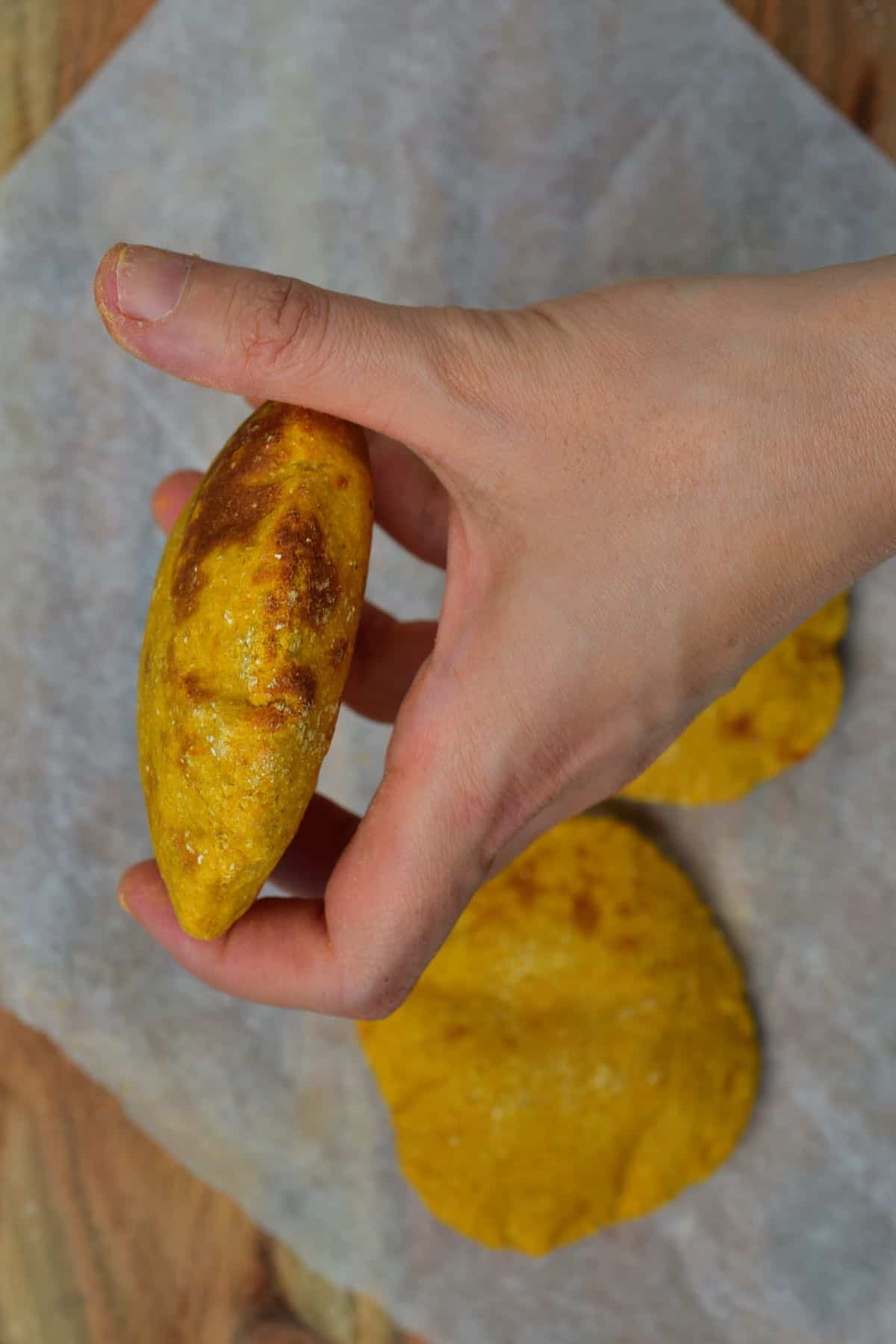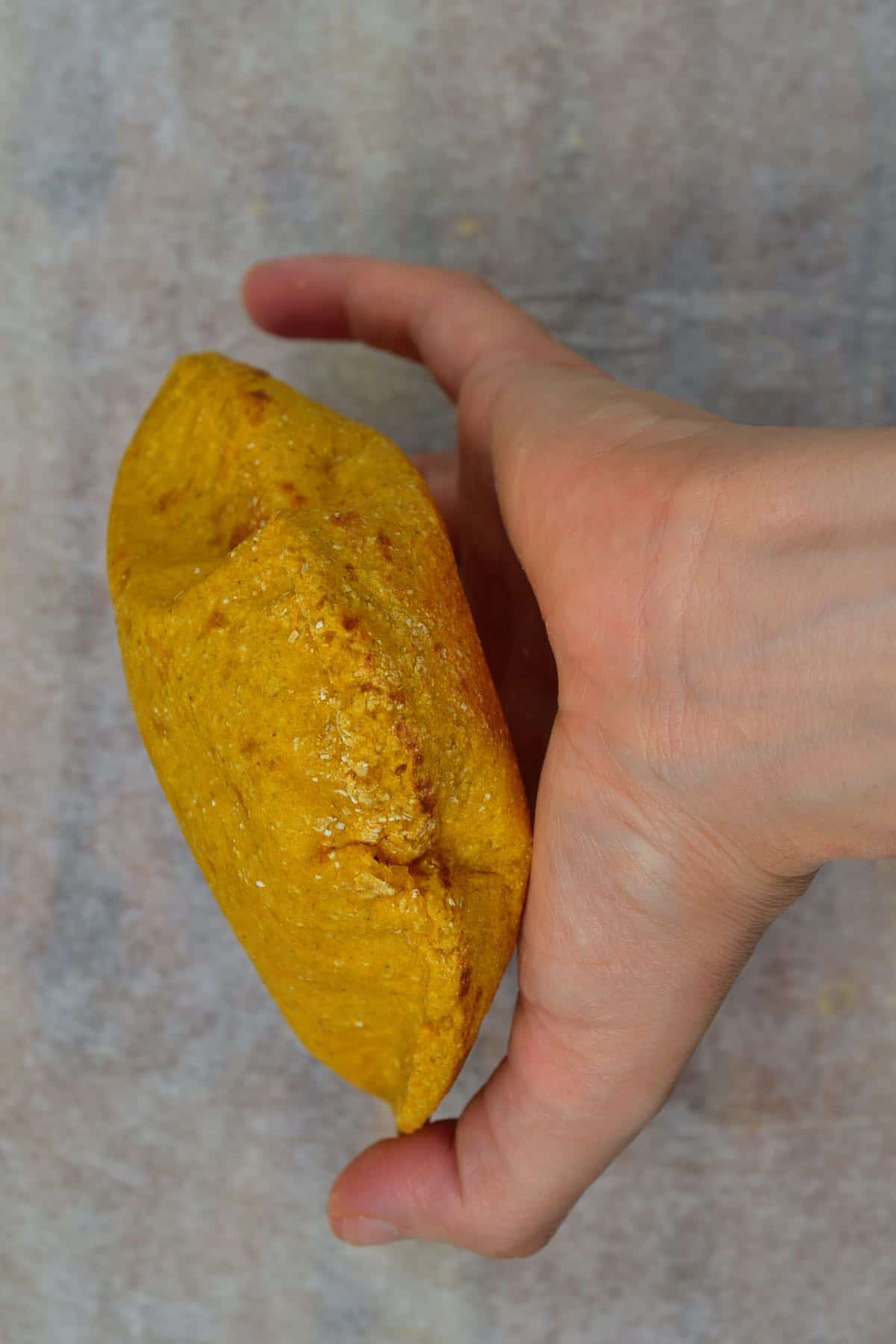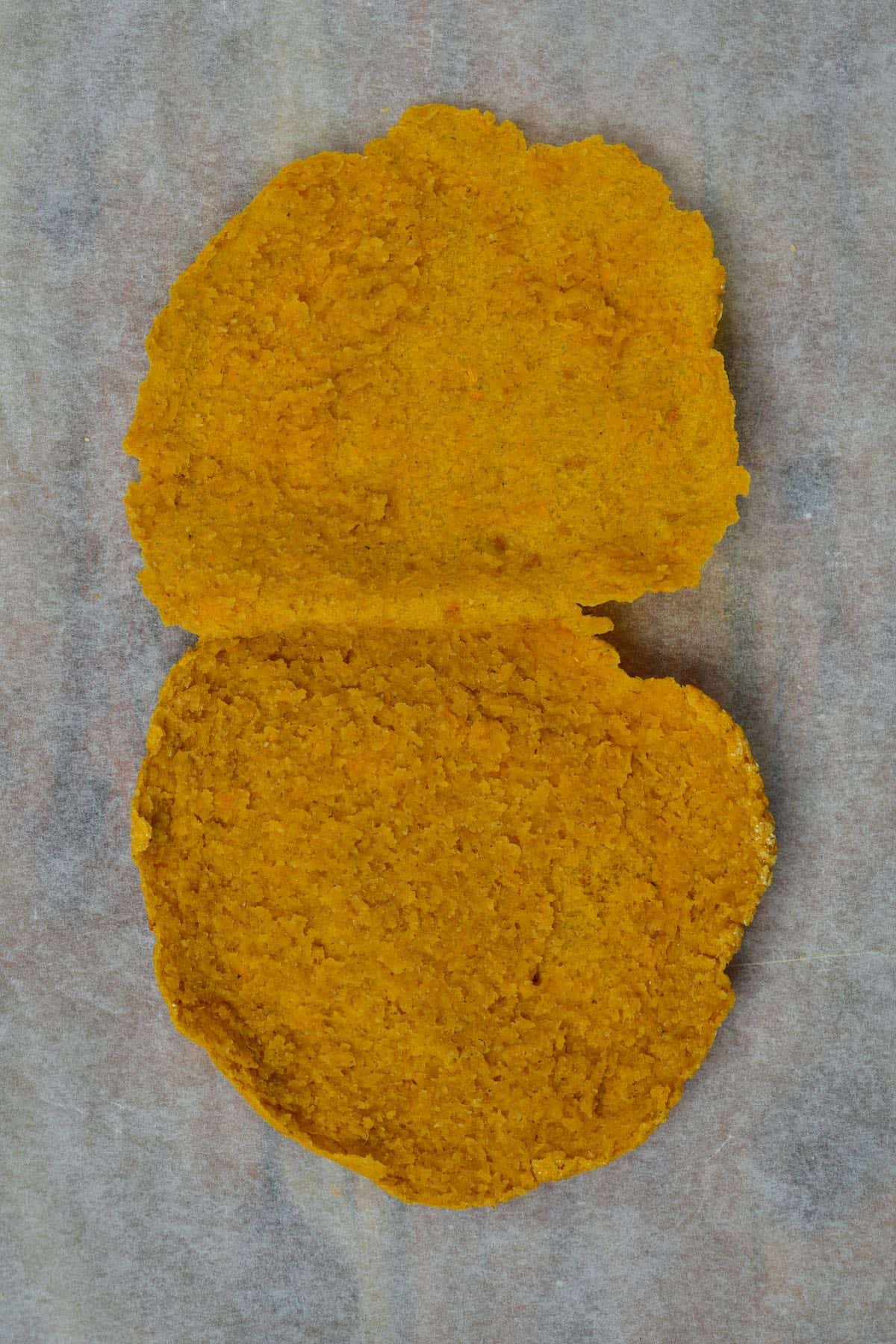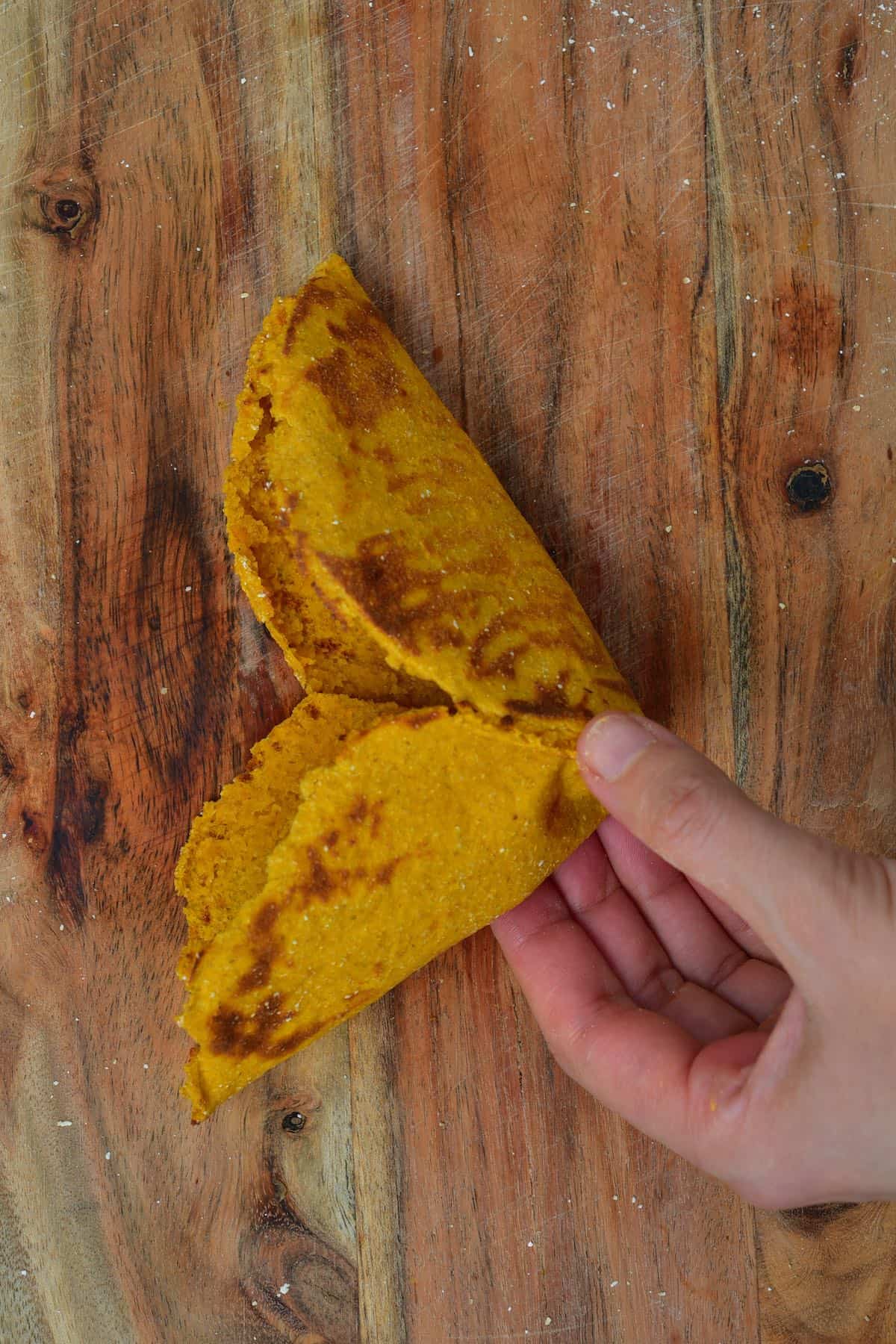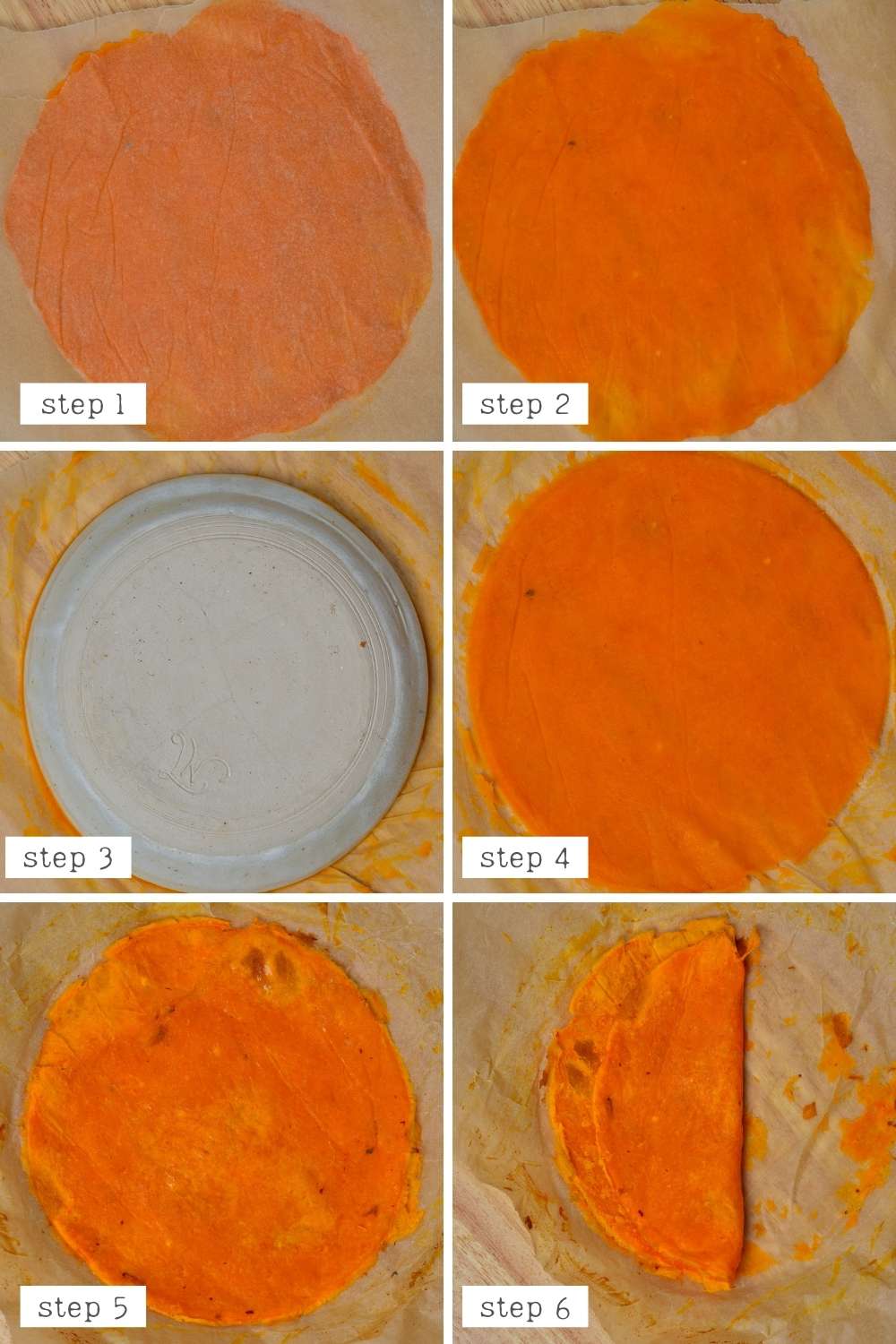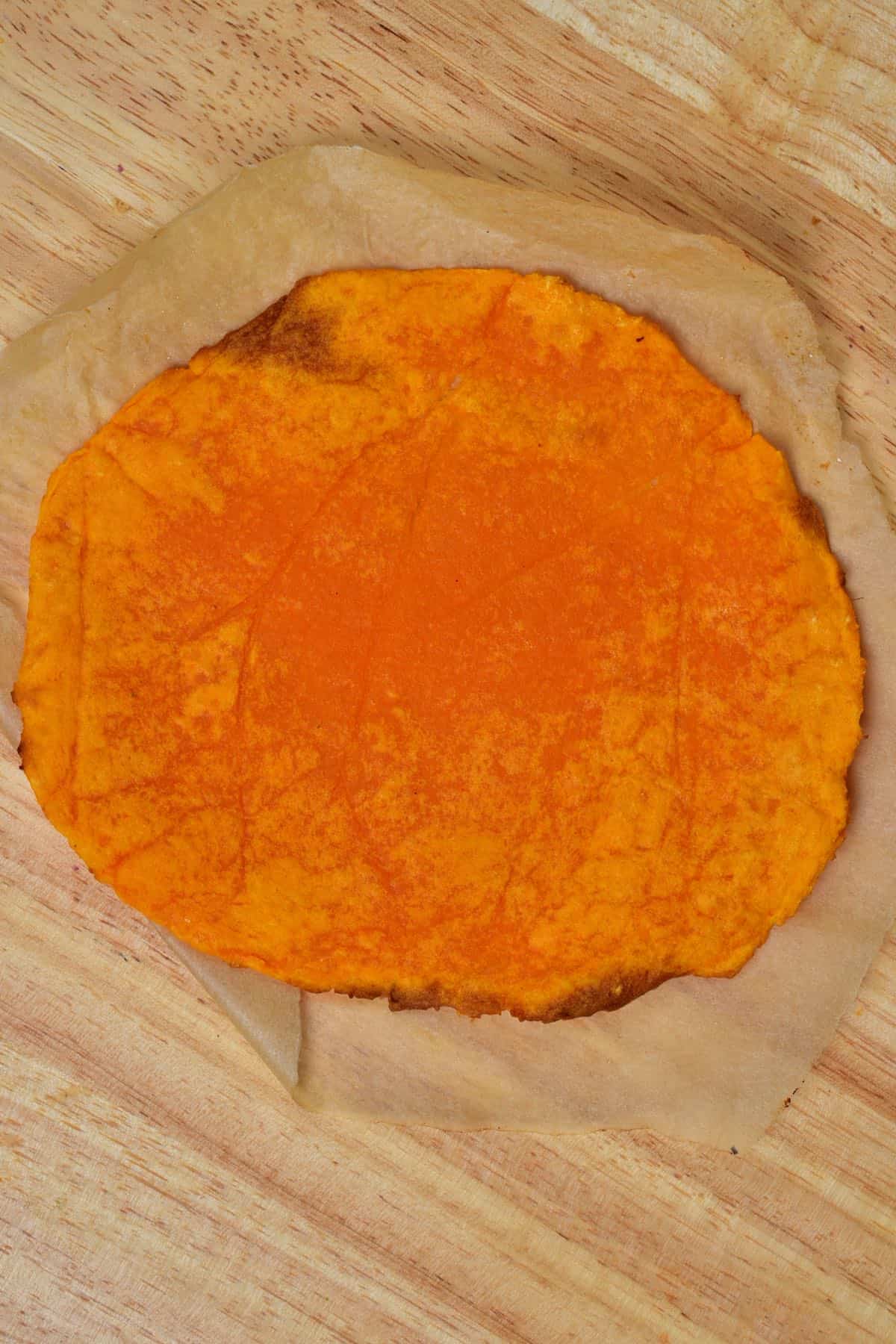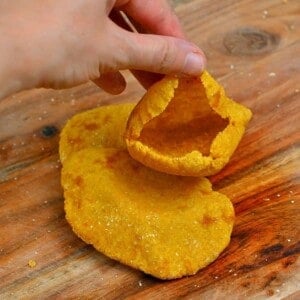Having already posted recipes for garlic naan, traditional pita bread, and even Turkish pide bread, I received multiple messages asking for a gluten-free option. I’d had the idea of using potato anyway, and with a little bit of experimentation, I discovered this sweet potato flatbread. What’s so special about this gluten-free potato bread is that it can be cooked as a flatbread sweet potato tortilla, but will also bake up amazingly as a gluten-free pita – impressive pocket and all. The sweet potato pita is perfect for stuffing with fillings like homemade falafel and creamy hummus. And all without any gluten, yeast, or kneading! All you need is just two ingredients too: sweet potato and oat flour! So as long as you have a sweet potato and some oats in your kitchen right now, then you’re ready to go. There’s no special equipment or tools needed either – just a bowl, baking paper, something to use as a rolling pin, and a baking tray! You can even use leftover baked sweet potatoes, boiled, or steamed sweet potato too – this sweet potato bread is a great way to use up those leftovers. Unfortunately, this method won’t work the same with regular potatoes (or at least not with my current experiments), so if you want a potato flatbread – why not try this ONE ingredient potato flatbread (yup – ONE ingredient only!).
The ingredients
Sweet potato: You can use leftover sweet potato (boiled, baked, steamed, etc.) or make it specifically for this sweet potato flatbread recipe. I have yet to find another potato variety that works in the same way in creating a pocket, though if you want a simple flatbread then regular potato should work fine.
How to make sweet potato flatbread
Step 1: Prepare the potato
If you aren’t using leftover cooked sweet potato, then cook it now. I prefer to use baked sweet potato as there’s no additional water added during the cooking process. You can bake the sweet potato in the oven or microwave (for quick results). Once cooked, allow the potato to cool and then mash with a potato ricer or potato masher.
Step 2: Mix the sweet potato dough
Mix the mashed sweet potato with half of the oat flour, mixing well. Then, continue to add more oat flour in, a little at a time, until you achieve a soft, but not sticky, dough. You may need to slightly adjust the amount of oats added to the potato, based on those potatoes’ liquid content and the method used to cook them.
Step 3: Roll out the dough
At this point, the way you deal with the sweet potato bread dough will change depending on what you want to make. First, lay the dough in between two pieces on parchment paper. Use a rolling pin to roll it out into the correct shape/thickness. For sweet potato roti/flatbread: When making sweet potato flatbread, the dough can be a little thicker 4-6mm. Feel free to make 1-2 larger flatbreads or multiple ‘mini’ ones. For Sweet Potato Pita bread: For pita, you’ll want to roll the dough very thin; this will help it form a nice pocket without being ‘doughy.’ I suggest trying to roll it out to around 3mm. Feel free to shape them fairly rustically. Alternatively, use a bowl to cut out perfectly round sweet potato pita/flatbread.
Step 4: Cook the sweet potato bread
For flatbread: Bake the sweet potato flatbread in the oven for between 5-10 minutes at 400ºF/200ºC. This time will vary somewhat based on how thick the dough is and how big the flatbreads are. It’s best to keep an eye on the sweet potato quick bread at 5 minutes to avoid burning. For Sweet Potato Pita Pockets: Turn the oven to its highest possible temperature (for me, that’s 500ºF/260ºC) and place an inverted baking tray in the oven while it pre-heats, the same way we do for regular pita. Once the oven is preheated (and the tray is nice and hot), transfer the sweet potato pita onto the hot tray and bake for between 5-7 minutes. You’ll see the dough puff up in front of your eyes!
To Use An Air Fryer
Cook the small pita pockets in the air fryer for around 5 minutes at 415ºF/210ºC. The pockets puffed up almost immediately for me. Once cooked, enjoy while warm, for the best results.
How to store
I usually only make enough of these sweet potato flatbreads for a single day. However, you can store any leftovers in an airtight container or bag for 3-4 days at room temperature. You can also freeze the sweet potato bread across a large tray (so they don’t stick together) and then transfer them to a freezer-safe bag/container for between 3-4 months. Thaw in the refrigerator before using/reheating.
How to serve
Serve your homemade sweet potato flatbread/roti/pita in several ways. When using it as a flatbread or roti, you can use it for mopping up sauces in stews and curries, like this:
Eggplant Stew Lebanese Green Beans (Loubieh Bi Zeit) Easy Thai Red Curry (Vegetarian/Vegan Options)
You can also use the thicker flatbreads to create a quick sweet potato pizza, top with tomato puree, your favorite melty cheese, and the toppings of your choice. Then broil until melted. Or, use as a sweet treat, topped with some melting butter, cinnamon, and sugar. The pita can be used in all the ways regular pita are – stuffed with Rainbow Vegan Falafels 5-ways or Easy Vegan Healthy Baked Falafel, salad, and creamy hummus. This 2-ingredient flatbread is also great for dipping: hummus, baba ganoush, Gluten-free Muhammara Dip (Roasted Red Pepper Dip), Moutabal dip, or Spinach Yogurt Dip (Borani).
Other recipe notes
You’ll have softer bread if you make sure to prepare the dough quickly after the sweet potato is cooked, while it’s still warm. If you plan to cook the flatbread in a pan, be careful when transferring them to the skillet. If any cracks appear then you can use a little extra dough to ‘patchwork’ them back together (but be careful as the pan is hot). Feel free to season the pre-cooked dough if preferred; garlic powder, onion powder, paprika, cayenne, salt, pepper, etc.
More potato recipes
The Perfect Microwave Sweet Potato Roasted Okinawan Sweet Potato Super Crispy Smashed Potatoes
If you try this sweet potato bread recipe, then let me know your thoughts and questions in the comments. I’d also really appreciate a recipe rating and would love to see your recreations – just tag @AlphaFoodie.
